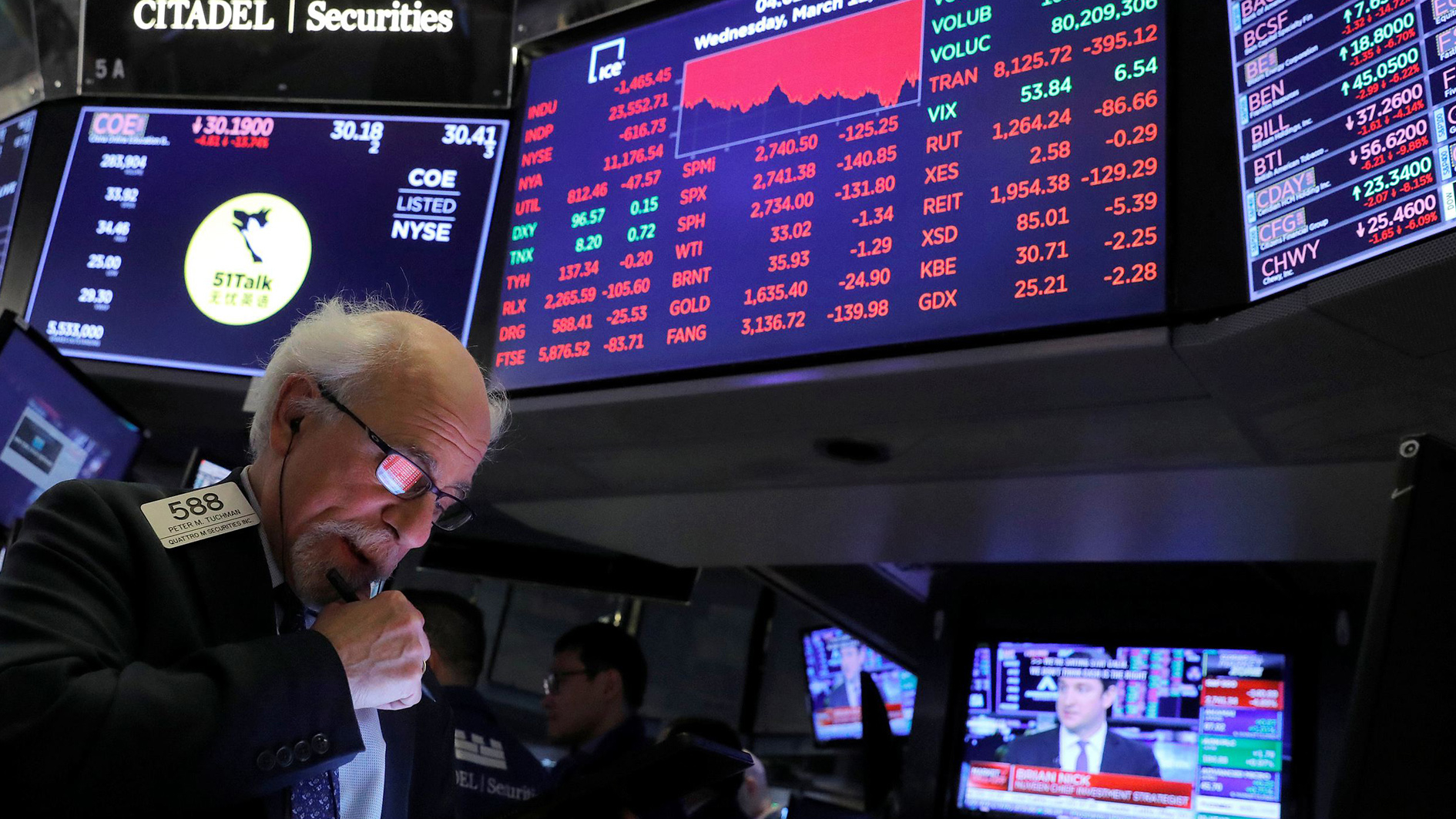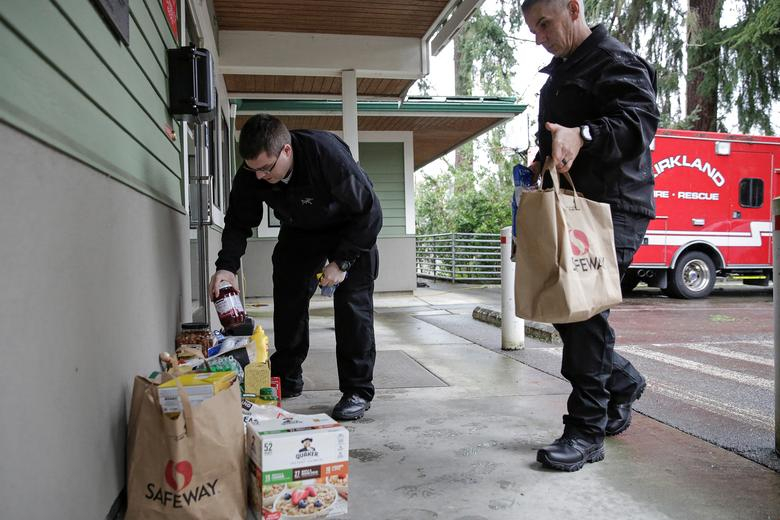
Editor's note: Bradley Blankenship is a Prague-based American journalist, political analyst and freelance reporter. The article reflects the author's opinions, not necessarily the views of CGTN.
The real U.S. economy is in a complete free fall, evident by the new data released by the U.S. Bureau of Economic Analysis showing that the economy shrank by 9.5 percent (or 32.9 percent at an annualized rate) and millions continue to file for unemployment. All the while, the U.S. Senate left for the weekend which will no doubt delay the proceedings of the new round of stimulus as the CARES act officially expired on July 31.
Tens of millions of Americans are now facing the most desperate situation they've ever experienced – many face eviction, possibly long-term joblessness, inability to pay debts and even hunger.
However, none of these problems would even be detectable if one simply looked at the U.S. financial market. Wall Street seems to be rallying while Main Street is starving, embodying the extreme disconnect between average Americans and the investor class – a symptom of endemic inequality.
In fact, after a sharp fall in February, shares have had their best quarter in over two decades. But, how is this happening? How exactly is it that the stock market has been totally insulated from the problems facing the real economy and will it continue to be?
Much of what's going on is owed to the Federal Reserve, which has beefed up the market since March by cutting interest rates to zero and putting trillions of dollars into securities thus providing the financial system with sizable liquidity to ensure investor confidence.
It's unlikely that intervention at this level can continue indefinitely and yield the same results with investors, highlighting the fact that the financial market is essentially floating along on Fed support.
It should be noted that Federal Reserve Chair Jerome H. Powell has pointed out that "the path forward for the economy is extraordinarily uncertain, and will depend in large part on our success in keeping the virus in check" and that it will "also depend on policy actions taken at all government levels to provide relief [...] for as long as needed."
The Fed's quantitative easing strategy was designed to bolster the market for the immediate short-term until the virus was controlled, then return to normal as the economy rebounded. But the virus was never controlled and the economy is only continuing a downward spiral as COVID-19 cases explode in areas relatively spared in the initial stages of the crisis.

Police deliver groceries to Kirkland Fire Station 21 where firefighters are in quarantine following their response to coronavirus cases in Kirkland, Washington, March 2. /Reuters
Police deliver groceries to Kirkland Fire Station 21 where firefighters are in quarantine following their response to coronavirus cases in Kirkland, Washington, March 2. /Reuters
There's simply no way for this strategy to work in the long-term as investor confidence will absolutely be affected once the reality of the exact scope and duration of the coronavirus crisis sets in. The fact that, for example, the price of precious metals is skyrocketing while the dollar falters is perhaps a sign that faith in the market is already on the decline, but more is sure to be learned from the earnings reporting already underway.
And as I have previously pointed out, in regards to Powell's reference to government relief, the enhanced unemployment provided by the CARES act has almost certainly been the main driver of consumer spending since the coronavirus crisis began.
But with that now expired as of July 31, anything passed by Congress that cannot compensate for this loss of income for millions of Americans will lead to consumer spending falling out. This will be felt in broad sectors of the financial market as analysts and investors alike hold their breath over stimulus negotiations.
The second dimension to this precedes the coronavirus crisis itself. Nearly one year ago, famous investor Michael Burry described what he sees as the "bubble" in passive investment. As he pointed out at the time, nearly half of the money in U.S. stocks is made up of so-called passive investors who try to overcome the boom-bust cycle of markets by tracking entire indexes or sectors rather than picking individual stocks (active investing).
While this generally poses less risk to investors, the problem, as Burry points out, is that valuation becomes tricky under this scheme and it could be the case that the assets backing these securities held by passive investors aren't properly valued. We can see this, for example, in the fact that much of the market rally is led by growth stocks in big tech that are unlikely to sustain their performance.
Herein lies the problem – knowing the actual value of financial assets during this crisis is fundamentally impossible given the myriad variables at play. Yet, cash is flowing through the market virtually unchecked by the catastrophic events affecting the underlying economy. Trillions of dollars – including investments that are the "nest egg" for millions of pedestrian investors – are at risk.
If the last major financial crash, the one that happened in 2008 and the events that followed, taught us anything, it's that policymakers are more than willing to go to bat for the financial market at any cost. This is clear by the Fed's quantitative easing and perhaps investors may feel secure with the backing of the U.S. government for now. But Jerome Powell's cautionary statements in recent weeks must not be dismissed – nothing is certain unless by some miracle the virus is contained.
All signs point to the fact that no divine intervention – nor monetary policy – will reverse the spread of the coronavirus in the U.S. With this, the effects on the financial market are going to be unavoidable and the rally now is probably just a mirage.
(If you want to contribute and have specific expertise, please contact us at opinions@cgtn.com.)